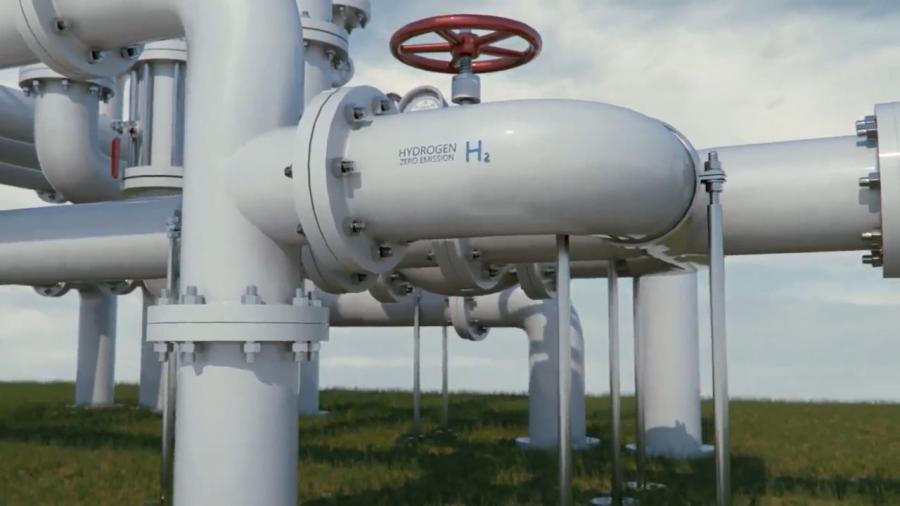

As research and technology advances, blending hydrogen into natural gas pipelines will become a key component of our transition to a lower-carbon future.
LONDON, LONDON, UNITED KINGDOM, August 20, 2024 /EINPresswire.com/ — Hydrogen, a versatile energy carrier, holds enormous potential to reduce emissions in sectors where decarbonisation is challenging. One innovative approach that is gaining traction is blending hydrogen with natural gas. This method leverages existing infrastructure and provides an economical solution for transporting hydrogen over long distances without the need for new pipelines. This strategy can deliver near-term emissions reductions and boost the market for green hydrogen technologies such as electrolysers. However, integrating hydrogen into natural gas pipelines presents several challenges and uncertainties that need to be thoroughly addressed.
One of the main issues with hydrogen blending is the interaction between hydrogen and existing pipeline materials. Hydrogen embrittlement is a phenomenon where hydrogen atoms diffuse into the metal, causing it to become brittle and crack. This issue is particularly critical when pipelines operate under high pressure. To mitigate this risk, a comprehensive assessment of the maximum allowable operating pressure (MAOP) of pipeline segments is essential. In many cases, replacement or modification of pipeline materials is required to ensure they can withstand the altered pressure dynamics caused by hydrogen blending.
The economic feasibility of retrofitting existing pipelines to accommodate hydrogen blends is a critical consideration. These modifications must address material issues to prevent hydrogen embrittlement and implement safety measures to manage the increased risks associated with hydrogen’s wider flammability range. The costs associated with these upgrades must be balanced against the benefits of reduced emissions and the potential for creating an early market for green hydrogen technologies.
To accommodate hydrogen in natural gas pipelines, operational adjustments are required. Hydrogen has a lower energy density per unit volume compared to natural gas, which impacts the energy transfer efficiency of pipelines. Blending hydrogen can reduce the overall energy transfer capacity, requiring a potential increase in flow rate or pressure to compensate. These adjustments are complex and may require further changes to the pipeline infrastructure to ensure safe and efficient operations.
Identifying appropriate points for hydrogen injection into the pipeline network is critical to maintaining system integrity. Modcon.AI optimization software developed by Modcon Systems Ltd. plays a central role in this process. This advanced software helps identify the optimal injection points and determine the best blend ratio between natural gas and hydrogen to ensure safety and efficiency in power generation. Assessing existing pipeline infrastructure, including materials and installed equipment, is essential to determine compatibility with hydrogen. This assessment helps identify sections that may need to be modified or replaced to safely handle hydrogen blends. Understanding the impact of hydrogen blending on end-use equipment is critical. Equipment and supporting facilities may need to be modified to accommodate the changed properties of the hydrogen-natural gas blend. Ensuring these components can operate safely and efficiently with the new fuel mix is paramount.
The blend ratio of hydrogen to natural gas can vary widely, from as little as 1 percent by volume to over 50 percent. In some cases, pipelines can even handle up to 100 percent hydrogen. Maintaining the correct blend ratio is critical to ensure system integrity and accurate billing based on gas heat content. Traditionally, gas chromatography has been used to analyze the composition and calorific value of pipeline gases. However, this method requires significant investment, extensive maintenance, and involves sampling and preparation. Modcon’s innovative solutions, such as the MOD-1040 Process Analyzer and MOD-1060 Hydrogen Analyzer, address these challenges with in-situ measurement capabilities. These devices eliminate the need for sampling and ensure precise, real-time measurements in harsh conditions.
The MOD-1040 process analyzer provides on-site measurement capabilities, eliminating the need for sampling. It provides accurate measurements even in harsh conditions with a user-friendly interface and compact design. Being ATEX/IECEx certified and SIL compliant, it is suitable for hazardous areas and critical safety applications. The MOD-1060 hydrogen analyzer measures H2 content using an on-site method. This advancement in measuring hydrogen concentrations in natural gas blends provides accurate, real-time data that is critical to operational safety and efficiency.
Integrating hydrogen into natural gas pipelines is a promising step towards decarbonizing hard-to-abate sectors. This process requires a comprehensive understanding of the material, economic and operational factors. Innovations from companies like Modcon are playing a critical role in addressing traditional challenges by providing more efficient, reliable and safer solutions for monitoring and managing hydrogen-natural gas blends. As research and technology advances, hydrogen blending into natural gas pipelines could become a key element of our transition to a lower-carbon future.
Anya Age
Modcon Systems Ltd.
+44 204-5771737
Send us an email here
Visit us on social media:
LinkedIn
YouTube
MOD 1040 Process Analyzers
![]()

